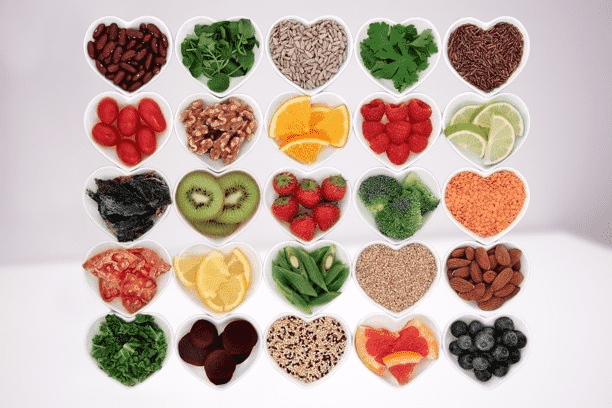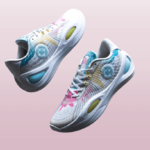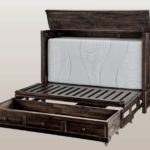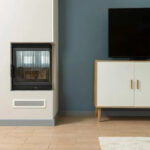Welcome to The Ultimate Guide to Soft Foods for Braces: What to Eat and Avoid! If you or someone you know is embarking on a braces journey, this blog post is here to lend a helping hand (or, should we say, tooth?). Braces can work wonders for straightening teeth and creating that perfect smile, but they also have dietary restrictions.
But fear not! We’ve got you covered with an extensive list of delicious soft foods that are gentle on your braces and satisfying for your taste buds. So sit back, relax, and get ready to discover the world of delectable spoon foods that will make your brace-wearing experience a breeze!
Contents
- 1 What are Braces, and Why Do You Need Soft Foods?
- 2 Benefits of Soft Foods for Braces Wearers
- 3 The Best 10 Soft Foods for Braces to Eat
- 4 Snack Ideas for Those with Braces
- 5 Foods to Avoid with Braces
- 6 Tips for Preparing and Eating Soft Foods with Braces
- 7 Conclusion: The Ultimate Guide to Soft Foods for Braces: What to Eat and Avoid
What are Braces, and Why Do You Need Soft Foods?
Braces are orthodontic devices that consist of metal brackets and wires. They commonly correct misaligned teeth, bite issues, and other dental problems. The cables, connected to the brackets and affixed to the teeth, progressively force the teeth into the appropriate positions.
While braces might improve your smile, they can make it difficult to chew some meals. That’s the perfect situation for soft snacks! Spoon foods are simple to chew and don’t require much jaw force. You may ensure you’re giving your teeth a break from severe pressure when wearing braces by including spoon foods in your diet.
Spoon foods are advised for brace users primarily because they lessen the possibility of breaking or displacing any braces’ components. Foods that are sticky or hard can bend wires or loosen brackets, requiring more time for treatments and perhaps causing discomfort.
Additionally, eating spoon foods helps avoid discomfort or irritability from chewing on rigid surfaces. Your mouth and gums may become more sensitive than normal when you wear braces since foreign items are constantly in your oral cavity.
You can have meals without discomfort with softer options like yogurt or mashed potatoes rather than crunchy nibbles or hard candies. Healthy dental hygiene is more accessible with more peaceful meal options because they are less likely to become trapped between wires and brackets.
Benefits of Soft Foods for Braces Wearers
It is advised to eat soft meals when wearing braces. Because they are so gentle on the gums and teeth, they have the primary benefit of not hurting the braces or wires as much. It is advised that people wearing braces eat soft meals for their comfort. This is due to the possibility of injury when biting into crunchy or otherwise hard foods.
Another benefit of soft foods is that they are easier to chew and swallow. Eating some meals while wearing braces may be difficult, especially if they require more chewing. Soft foods aid in this because they are gentler on the teeth and gums and enable faster, more enjoyable chewing, improving the condition.
Soft meals generally contain a multitude of advantageous components as well. This is important since the patient’s ability to maintain a healthy diet is critical to the success of orthodontic therapy. Eating a balanced diet rich in dairy products, lean meats, soft fruits, vegetables, and lots of healthy grains is the most excellent method for those wearing braces to care for their teeth.
The further advantage of eating soft foods might be that they promote consistent brushing and flossing. Frequent large meals lead to the accumulation of sticky or otherwise challenging-to-clean food particles in braces. On the other hand, softer foods tend to be easier to get out of brackets and wires when you brush and floss your teeth frequently.
Soft foods will increase the availability and nutritional content of each serving size (which is essential if you can’t or won’t have access to other forms of food, like fresh produce); they will also be more comfortable to eat and chew because they won’t be as much pressure on your teeth and gums; they will be easier to swallow because soft foods require less energy to consume than more complex materials; and they will promote better dental care by preventing potentially harmful or abrasive substances that could harm bracket work or wire alignments that are required throughout one’s treatment.
The Best 10 Soft Foods for Braces to Eat
- Mashed potatoes are a favorite comfort food among those wearing braces because they are easy to chew, creamy, and buttery.
- Yogurt: Packed with calcium and protein, this food tastes excellent and helps keep teeth and bones strong.
- Soups: For those wearing braces, warm and nutritious soups like tomato bisque or chicken noodles are helpful.
- Combine your favorite fruits with milk or yogurt to make a nutritious smoothie that benefits you and won’t damage your braces.
- Famous for breakfast, scrambled eggs are high in protein and low in fat. After they’re finished, your teeth will feel softer.
- Oatmeal: Add some fruit or nuts to a bowl of hot oats in the morning to give it a little extra taste and texture.
- Pasta: Go for a softer pasta like penne or macaroni than spaghetti when making authentic Italian cuisine.
- Soft fruits like bananas, avocados, and melons won’t bother braces.
- Because of its strong protein content and velvety texture, cottage cheese is an excellent option for anyone wearing braces.
- Have a tiny scoop of ice cream whenever you’re craving something sweet—avoidably, the sticky toppings can quickly get into your braces.
- To keep your braces in good working order, chop food into little pieces and chew slowly while eating these soft foods.
Snack Ideas for Those with Braces
- Snacking can be challenging for those with braces, but plenty of delicious and satisfying options won’t harm your orthodontic work. These snack suggestions can fill you up while caring for your teeth.
- Because of its smooth and creamy texture, yogurt makes a beautiful and healthy snack. Sticking to basic or sugar-free kinds is advisable if you wear braces.
- Fruits like bananas, cherries, and melons are soft and need little chewing. Before eating, cut them into small pieces with care.
- Broccoli florets, carrots, and green beans are among the vegetables that should be simmered until they are the right consistency because they may irritate braces.
- When eating solid foods becomes complex, warm soups can provide comfort and nutrients. Convenient soups are those that are pureed or have a broth base.
- Try some cheese sticks or cubes as a mid-meal snack; they’re abundant in calcium.
- Smoothies that combine your favorite fruits with milk or yogurt are a delicious and nutritious way to ensure your body gets all the nutrients it needs. Remember that it’s imperative to avoid hard, stiff, or sticky foods that could cling to or harm your braces. Think carefully about the snacks you choose to eat during the day!
- By coming up with inventive methods to eat softer foods during snack time, you may satisfy your appetites and maintain good oral health!
Foods to Avoid with Braces
You have to watch what you eat when wearing braces. Certain foods may damage your braces or become lodged in them, causing discomfort and possibly complicating your orthodontic treatment. These are some foods you should stay away from to have a successful and seamless braces experience.
Goodbye to chewy treats such as taffy or caramel. These sticky goodies are likely to cause damage and be difficult to remove from your brackets and wires because they can become twisted up readily. Likewise, it would help if you stayed away from hard candies and lollipops since they may place too much pressure on your braces.
Popcorn comes next on the list! Those little kernels might ruin your braces if they become stuck between the wires and your teeth, as much as they can be enticing on movie nights or get-togethers. Similarly, crunchy nibbles like chips and pretzels could satiate appetites, but they risk bending cables or shattering brackets.
If you enjoy eating fresh fruits and veggies (which is excellent!), chop them into pieces before eating. This will let you enjoy these healthy foods without putting undue strain on your hardware.
Finally, but just as importantly, avoid chewy foods like bagels and pizza with a thick crust. When biting into these rich foods, your jaw must work especially hard, which increases the risk of bracket breakage or wire displacement.
Avoiding these problematic foods during your orthodontic journey can lessen the likelihood of encountering obstacles or delays in getting that ideal smile! Recall that the key is to exercise caution now to reap the rewards of a gorgeous smile later!
Tips for Preparing and Eating Soft Foods with Braces
Following these tips, you may cook and consume spoon foods while wearing braces. Initially, you might want to think about puréeing different fruits and vegetables in a food processor or blender for soups or smoothies. This makes it easier for them to eat while maintaining their nutritious worth.
- A softer meal, such as rice, spaghetti, or bread, is also a great choice. These are great for people wearing braces since they can be cooked until smooth and straightforward to chew. Try slicing your meal into small pieces before you consume it to make eating easier.
- Consider the temperature when eating soft meals and when wearing braces. Keep food at room temperature or cold to avoid aggravating your braces. Instead, I suggest selecting slightly warm or room-temperature goods.
- Remember to brush your teeth every day! You must brush and floss more frequently when wearing braces than when you don’t. After every meal, make sure you wash your teeth thoroughly.
Following this simple procedure, you can still eat spoon foods while wearing braces.
Conclusion: The Ultimate Guide to Soft Foods for Braces: What to Eat and Avoid
Everything you need to know about what to eat and avoid when wearing braces is included in this extensive guide. Even soft meals that work well with braces have been discussed. If you want the most outstanding results possible, you must take additional care to keep your braces clean and in good shape.
To reduce the possibility of harm or discomfort and to keep your braces and teeth healthy, eat more spoon foods. Yogurt, mashed potatoes, smoothies, soups, and other delectable foods will keep you satiated during therapy.
Snacking when wearing braces can be exciting despite the potential for specific issues. Ice cream, mozzarella sticks, and a few mild fruits could be something to consider (of course, in moderation). Think of yourself as standing in someone else’s shoes. Verify that the solutions you choose won’t harm your brackets or cables.
Eat as much tasty food as you like, but be cautious when consuming items that may be hazardous. Avoid foods that are hard to chew, such as nuts and tough meats, and crunchy foods, like popcorn and chips.
It could require you to adjust how you handle and consume spoon foods. Use cutlery to finely chop or carefully break the dish into little pieces before beginning the more complex tasks. Maintaining the health of your teeth and braces is greatly influenced by your diet.
Finally, but just as significantly, if you wear braces, our comprehensive guidance on spoon foods will help you maintain healthy, delicious meals while keeping your teeth clean.
While wearing braces, make the most of your soft food journey, and remember to take care of yourself!










